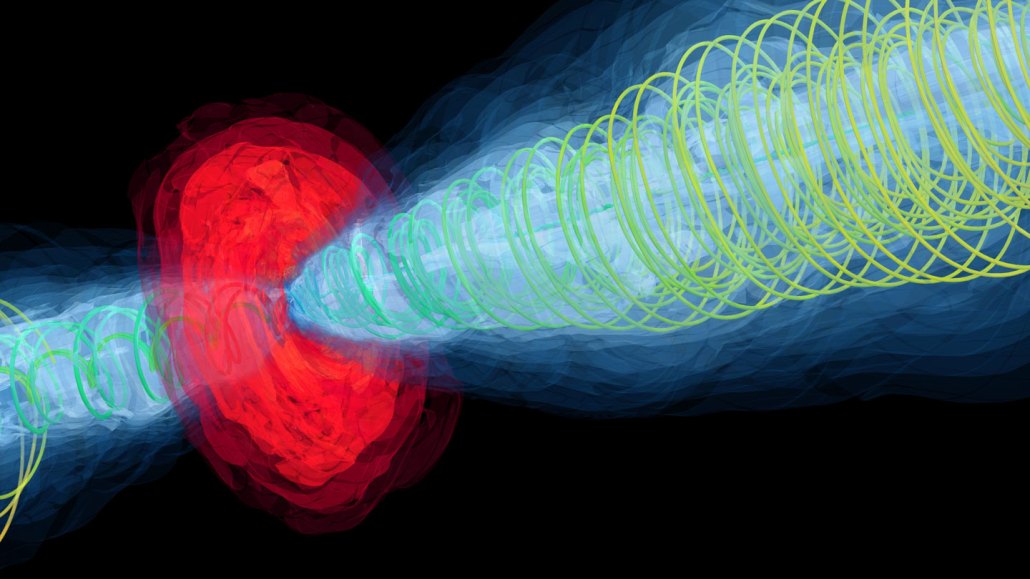
The supermassive black hole in the galaxy M87 is surrounded by an accretion disk (red in this computer simulation) and launches jets (blue) circled by magnetic field lines (green).
Alejandro Cruz-Osorio, Luciano Rezzolla

The supermassive black hole in the galaxy M87 is surrounded by an accretion disk (red in this computer simulation) and launches jets (blue) circled by magnetic field lines (green).
Alejandro Cruz-Osorio, Luciano Rezzolla